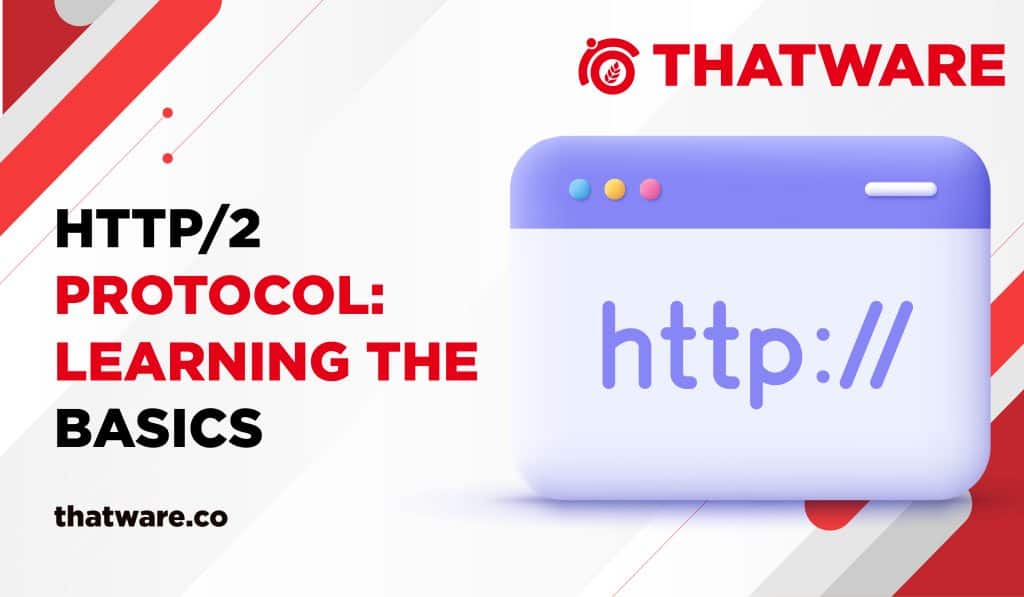SUPERCHARGE YOUR ONLINE VISIBILITY! CONTACT US AND LET’S ACHIEVE EXCELLENCE TOGETHER!
The HTTP/2 protocol is a project spearheaded by the Internet Engineering Task Force (IETF) to build more robust network infrastructure. That fits the needs of current users with the assistance of some of Google’s SPDY developers. It was introduced in May 2015 to breathe new life into the HTTP protocol. Which had not seen substantial updates since HTTP 1.1. You’ll learn all you need to know about HTTP/2, from the basics to advanced subjects.
Let’s get this party started!

What Exactly Is The HTTP 2 Protocol?
HTTP (Hypertext Transfer Protocol) is the foundation of Internet data transfer and is used to deliver and receive data. The Internet Engineering Task Force first launched HTTP/1.1 in 1997. And HTTP/2 has been the first significant HTTP protocol change since then. However, as web pages expanded in size, HTTP/1.1’s ability to refresh them became increasingly difficult. As it only allows one active request per TCP connection and one pending appeal.
Web browsers have attempted to circumvent this by sending many requests across multiple TCP connections simultaneously; however, this generates congestion and a poor user interface.
Because of the inadequacies of HTTP/1.1, a new protocol was required. When the Internet Engineering Task Force’s HTTP Working Group developed the HTTP/2 protocol, it addressed issues with HTTP/1.1 and enhanced the World Wide Web. It is supported by Google Chrome, Firefox, Safari, Internet Explorer 11, and Microsoft Edge.
The Significant Benefits Of The HTTP 2 Protocol
There was a need to replace HTTP1.x with a new protocol that provided advantages to traditional internet users. Technology advancements have almost totally facilitated the transition from HTTP1.x to HTTP2.
According to online businesses and consumers, the web is growing slower as it grows congested with ever-increasing volumes of useless media-rich material. HTTP/2 enhancements were developed to increase the efficiency of client-server data transport. Online businesses can efficiently reach their target customers, while internet users may swiftly access richer digital information.
The speed of the Internet varies depending on the device and geographical area. Densely populated cellular networks cannot compete with high-speed internet access for a rising number of mobile users. Web Protocol Version 2 (HTTP/2) has emerged as a viable solution with the following advantages.
- Boost Website Performance
The term encompasses all of the advantages of HTTP/2. When compared to its predecessors and competitors, HTTP/2 outperforms them. The ability of HTTP/2 to transmit and receive more data during each client-server communication cycle results in a true, acceptable, and practical performance boost. Multiplexing technology, such as the multi-story seating chambers in the Airbus aeroplane, provides additional space for carrying and transferring more data simultaneously.
How does web performance improve when all impediments are removed from the file transmission method?
A fast website has many other advantages, like enhanced customer satisfaction, better search engine marketing, increased productivity and resource utilization, a larger user base, better sales figures, and more. HTTP/2 adoption, on the other hand, is more feasible than developing vacuum chambers for large, multi-story trains, which would be prohibitively expensive.
Improve The Quality Of Internet Access On A Mobile Device
Millions of people use their cell phones to access web applications, their major gateway to the digital world. Because of the Post-PC Era, more individuals use cell phones to access Web-based services. And perform mundane computer tasks on the go, rather than sitting next to a Windows PC for lengthy periods.
HTTP/2 was created in response to current web usage trends. It has several features such as multiplexing and payload reduction. And cellular data networks with limited capacity per user can reduce latency while utilizing internet services. Furthermore, HTTP/2 enhances the online experience by delivering high dependability and previously unavailable features on desktop PCs. The advantages of HTTP/2 for mobile customers will help Internet firms immediately.
- Access To The Internet At A Lesser Cost
Internet technology advancements have always been to increase internet availability and speed. Since the introduction of the World Wide Web, the cost of utilizing the Internet has decreased dramatically. Simultaneously, telecom service provider monopolies accused of unlawful, and cost-cutting initiatives appear to be stalled.
According to the business, the increased throughput and data transmission efficiency are promised by HTTP/2. It would assist telecom carriers in lowering operational costs while maintaining solid internet standards. Low operating costs will encourage internet service providers to cut their rates for the low-end market. And add good service tiers into their present pricing structure.
- Broad Area Coverage
Due to a lack of affordable Internet connectivity, African and Asian markets with large populations remain underserved. To maximize their income, internet businesses focus their investment on services only available in urban and developed areas. HTTP/2 is projected to be extensively adopted due to its many benefits, automatically reducing network congestion and freeing up assets and bandwidth for remote, undeveloped geographical locations.
- Widespread Media Exposure
Modern online experiences aim to provide media-rich content with lightning-fast browser load speeds. Theoretically, Internet users demand media-rich content and services that are continuously updated. Even when delivered as a subscription service via the cloud, the cost of network design is not always affordable for internet firms. Although without lowering the actual file size, HTTP/2 advantages and new features such as Header Compression reduce the impact overhead necessary to send resource-intensive media useful material between a client and the server through a few bytes.
- The Use Of Modern Technology Is Improved.
Client and server resource consumption has skyrocketed due to delivering media-rich content on social media and complex site designs. Even though web developers have worked around good optimization strategies, HTTP/2, a strong and stable solution, was on the horizon. Because of header compression, server push, stream dependencies, and multiplexing characteristics, HTTP/2 has a substantial benefit in terms of bandwidth use.
- Increased Security
The HPACK approach enables HTTP/2 to avoid current security flaws impacting message application layer protocols. HTTP/2 employs a ‘Security by Obscurity strategy to protect sensitive data sent between clients and servers by encoding instructions in binary and compressing HTTP header data. TLS1.2, an upgraded version of Transport Layer Security (TLS1.2), is necessary for increased data security.
- Creativity
HTTP/2 will appeal to both innovators and web performance lovers. It is based on Google’s SPDY protocol, is the Internet’s backbone as we know it today. HTTP/2 will supplant SPDY and all other HTTP versions in the coming years. Riddance from Complex Web Optimization Hacks includes HTTP browser compatibility as a viable solution for web developers looking to construct high-quality websites and online businesses.
In Terms Of SEO, What Does HTTP/2 Imply?
HTTP/2 is a relatively new data transfer technology that will dramatically improve web and website SEO. HTTP/2 outperforms HTTP in terms of speed since the line may be kept open. And you can send a large quantity of data at once. Because the line must be opened and closed after each file is received. The old HTTP protocol version takes a long time to transfer files over a single line.
As with so many website improvements every day, the SEO impact will feel implicit. Google’s algorithms do not consider whether a site is HTTP/2-ready, but it does encourage sites that provide a seamless user experience. As a result, migrating to HTTP/2 will improve a site’s search engine optimization. HTTP/2 will undoubtedly improve mobile performance, which has focused on recent speed-up efforts.
While new coding languages like AMP HTML have limited applications. Moving to HTTP/2 brings benefits across all devices and digital media. However, the advantages of HTTP/2 are extensive and long-lasting. So we should think of it as a platform for faster and more dependable SEO.
In Conclusion
We’ve all heard that faster websites improve Google search results, delivering a better user experience. Faster web pages keep your consumers interested for longer periods and encourage more sharing and interaction. HTTP/2 is a big step forwards that can help you improve the quality and performance of your site. The HTTP/2 protocol, on the other hand, is not a miracle.
Optimizations such as lossless image optimization for your website may significantly influence its performance and continue to be necessary.
Although adding HTTP/2 support to your website is critical, you should also make further changes and follow best practices to deliver the greatest user interface possible.
The Bottom Line
To summarise, we prepared the above guide to assist you in understanding what HTTP2 is, its benefits, and how to use it for SEO in greater detail. Furthermore, if you need SSL certificates to protect user data, authenticate website ownership, and prevent attackers from creating a counterfeit version of the site, please visit our website to get the best EV or DV SSL certificate plan for your website. Furthermore, now that you have all of the above vital aspects to pick the Fast, Secure Bedrock for the Future of SEO, ask yourself about your ambitions for moving forward.


